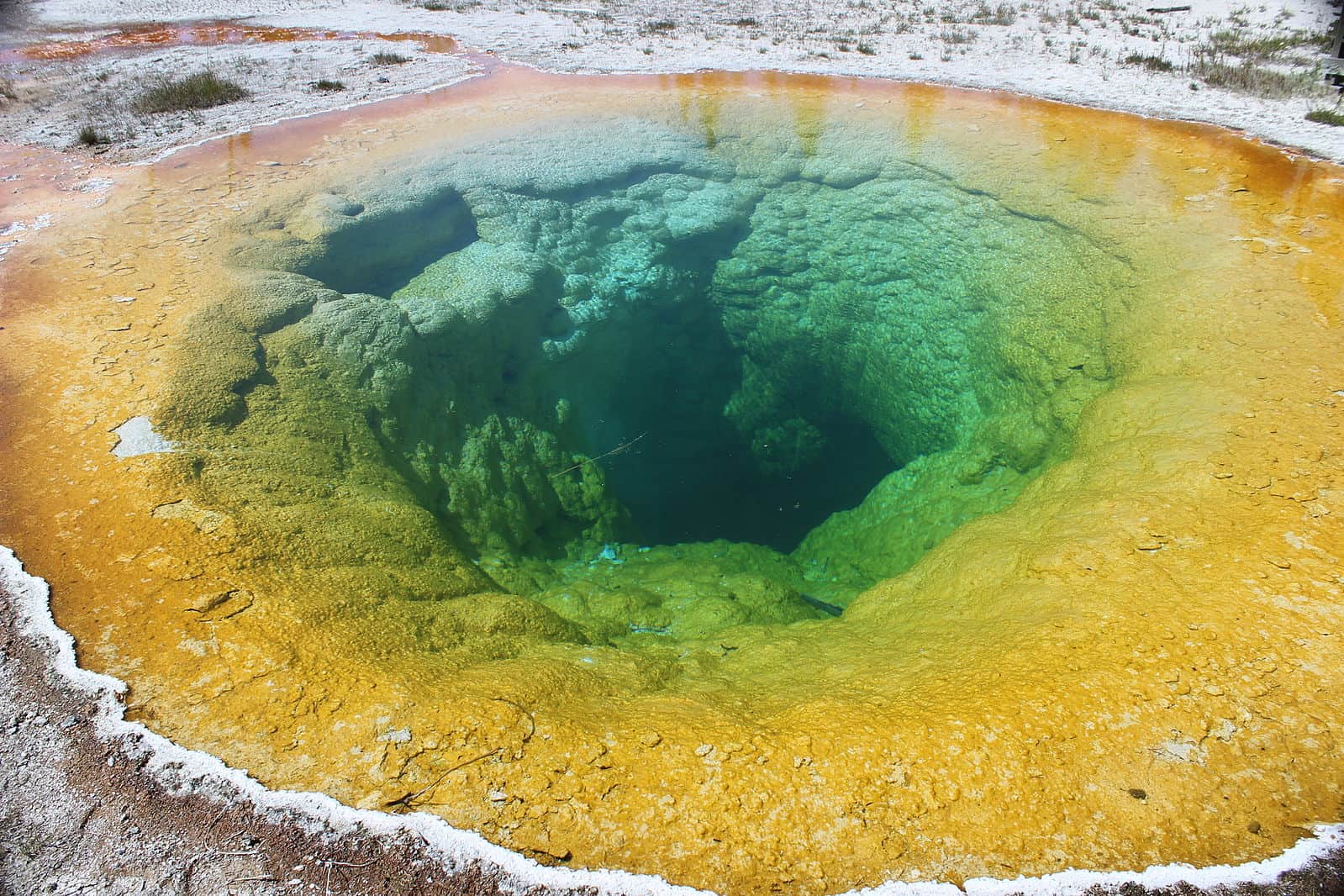Earth’s oxygen-laden atmosphere gradually emerged about 2.5 billion years ago in whiffs from a type of blue-green algae in shallow seas, says a team of scientists from Canada and the United States.
These oxygen whiffs probably continued for about 100 million years, gradually changing oxygen levels in our planet until enough had built up to create a permanently oxygenated atmosphere approximately 2.4 billion years ago.
This transition is known by scientists as the Great Oxidation Event, the Oxygen Catastrophe, or the Oxygen Crisis.
Brian Kendall, a professor of Earth and Environmental Sciences at the University of Waterloo in Canada, said:
“The onset of Earth’s surface oxygenation was likely a complex process characterized by multiple whiffs of oxygen until a tipping point was crossed.”
 Whiffs of oxygen came from a type of blue-green algae, perhaps similar to the algae seen here in a hot spring in Yellowstone Park. (Image: University of Waterloo)
Whiffs of oxygen came from a type of blue-green algae, perhaps similar to the algae seen here in a hot spring in Yellowstone Park. (Image: University of Waterloo)
“Until now, we haven’t been able to tell whether oxygen concentrations 2.5 billion years ago were stable or not. These new data provide a much more conclusive answer to that question.”
The scientists, from the University of Waterloo (Canada), the University of Alberta (Canada), Arizona State University (US), the University of California Riverside (USA), and Georgia Institute of Technology (USA), wrote about their findings in the academic journal Science Advances.
How & why did Earth develop an oxygen-rich atmosphere?
Professor Ariel Anbar, of the School of Molecular Sciences at Arizona State University, said:
“One of the questions we ask is: ‘did the evolution of photosynthesis lead directly to an oxygen-rich atmosphere? Or did the transition to today’s world happen in fits-and-starts? How and why Earth developed an oxygenated atmosphere is one of the most profound puzzles in understanding the history of our planet.”
The new data backs a hypothesis proposed by Prof. Anbar and colleagues in 2007. They found preliminary evidence in Western Australia of these oxygen whiffs in black shales deposited on the seafloor of a very ancient ocean.
They detected high concentrations of the elements rhenium and molybdenum in the black shales, long before the Great Oxidation Event.
Molybdenum and rhenium are found in land-based sulfide (British spelling: sulphide) minerals, which are especially sensitive to the presence of oxygen in the atmosphere.
When these minerals react with atmospheric oxygen, rhenium and molybdenum are released into rivers and eventually end up on the sea floor.
In this latest study, the scientists analyzed the same black shales to see what their concentrations of osmium were. Osmium, an element, like rhenium and molybdenum, is also present in continental sulfide minerals.
The ratio of two osmium isotopes – 187Os to 188Os – can tell us whether the osmium’s source were underwater volcanoes in the deep ocean or continental sulfide minerals.
The osmium isotope evidence detected in black shales correlates with greater continental weathering as a result of atmospheric oxygen.
Marginally younger deposits with lower rhenium and molybdenum concentrations had osmium isotope evidence for less continental input, suggesting the atmospheric oxygen had disappeared.
Citation: “Transient episodes of mild environmental oxygenation and oxidative continental weathering during the late Archean,” Brian Kendall, Robert A. Creaser, Christopher T. Reinhard, Timothy W. Lyons and Ariel D. Anbar. Science Advances. 20 November, 2015. DOI: 10.1126/sciadv.1500777.
